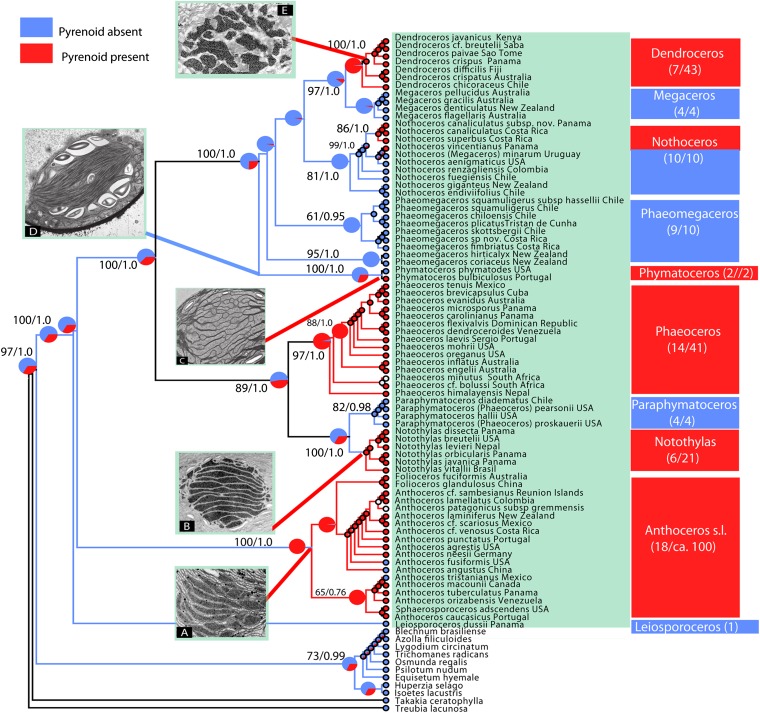Fig. 1.
Gains and losses of the pyrenoid (and putative CCM) in hornworts inferred under ML and an asymmetrical two-parameter Markov model. A phylogram showing genetic branch lengths is supplied as Fig. S1. Values at branches show ML bootstrap values and Bayesian posterior probabilities. Pyrenoid presence is shown in red, pyrenoid absence in light blue, and the pie diagrams represent the probability of either character. Pyrenoids evolved from five to six times, namely in Anthoceros sensu lato, Notothyladaceae (Phaeoceros and Notothylas), P. bulbiculosus, some Neotropical Nothoceros, and in Dendroceros. Transmission electronic micrographs show the main pyrenoid ultrastructural types. (A) Anthoceros-type. Sphaerosporoceros adscendens. Present in Anthoceros sensu lato and Phaeoceros, which have a darkly stained pyrenoid is traversed by multiple thylakoids, giving the appearance of multiple pyrenoids. (B) Notothylas-type. Notothylas breutelii. The pyrenoid is typically compact and darkly stained, with single thylakoids traversing the structure. (C) Nothoceros-type. Nothoceros canaliculatus. A lightly stained pyrenoid at the ultrastructural level and less conspicuous in living material; found in P. bulbiculosus and Nothoceros species. (D) Pyrenoidless condition. Phaeomegaceros hirticalyx. Pyrenoidless plastid with abundant short central grana and mostly peripheral starch. (E) Dendroceros-type. Dendroceros crispatus. The pyrenoid is composed of subunits of irregular shape, with numerous electron-opaque inclusions with thylakoids, including grana, interrupting the pyrenoid.

